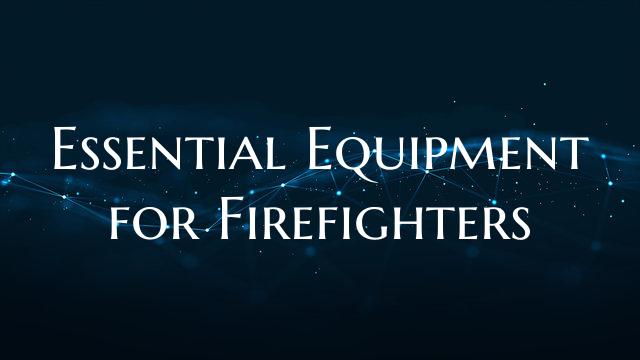Essential Equipment for Firefighters
Introduction: Firefighters play a crucial role in protecting lives and property during emergencies. To carry out their duties effectively, firefighters rely on a variety of specialized equipment designed to keep them safe and facilitate their work in challenging environments. In this article, we will explore the essential equipment that firefighters use in the line of duty.
Protective Gear: One of the most critical components of a firefighter's equipment is their protective gear. This typically includes a turnout coat and pants made from flame-resistant materials, such as Nomex or Kevlar. A helmet with a visor, gloves, and boots designed to withstand high temperatures are also essential to protect against heat, flames, and falling debris.
Self-Contained Breathing Apparatus (SCBA): In environments filled with smoke and toxic gases, clean air is a firefighter's lifeline. SCBA units consist of a mask, regulator, and air tank that provide a continuous supply of filtered air to the firefighter. This equipment allows them to breathe safely in hazardous atmospheres and work effectively in smoke-filled environments.
Fire Suppression Tools: Firefighters use a range of tools to combat fires, including hose lines, nozzles, and pumps to deliver water or fire-retardant agents to the blaze. Axes, pike poles, and Halligan bars are essential for forcible entry, search and rescue operations, and breaking through obstacles. Thermal imaging cameras help firefighters locate hot spots and trapped individuals within burning structures.
Communication Devices: Clear communication is essential for coordinating firefighting efforts and ensuring the safety of all personnel on the scene. Firefighters use portable radios and headsets to stay in contact with their team members, incident commanders, and other emergency responders. These devices enable quick relay of critical information and updates on changing conditions during firefighting operations.
Personal Protective Equipment (PPE): In addition to their turnout gear, firefighters wear personal protective equipment to enhance their safety on the job. This includes helmets, goggles, and ear protection to shield against impact, debris, and loud noises. Reflective gear improves visibility in low-light conditions, while specialized clothing protects against cuts, burns, and other occupational hazards.
Safety Harnesses and Ropes: For high-rise rescues, confined space operations, or situations requiring vertical access, firefighters rely on safety harnesses, ropes, and rigging systems. These tools allow for controlled descents, ascents, and rescues from elevated or inaccessible locations while maintaining the safety of both the rescuer and the victim.
Conclusion: The job of a firefighter is physically demanding and entails significant risks, requiring specialized equipment to ensure their safety and effectiveness in emergency situations. From protective gear and breathing apparatus to fire suppression tools and communication devices, each piece of equipment plays a vital role in supporting firefighters as they bravely serve their communities and protect lives and property from the ravages of fire.

